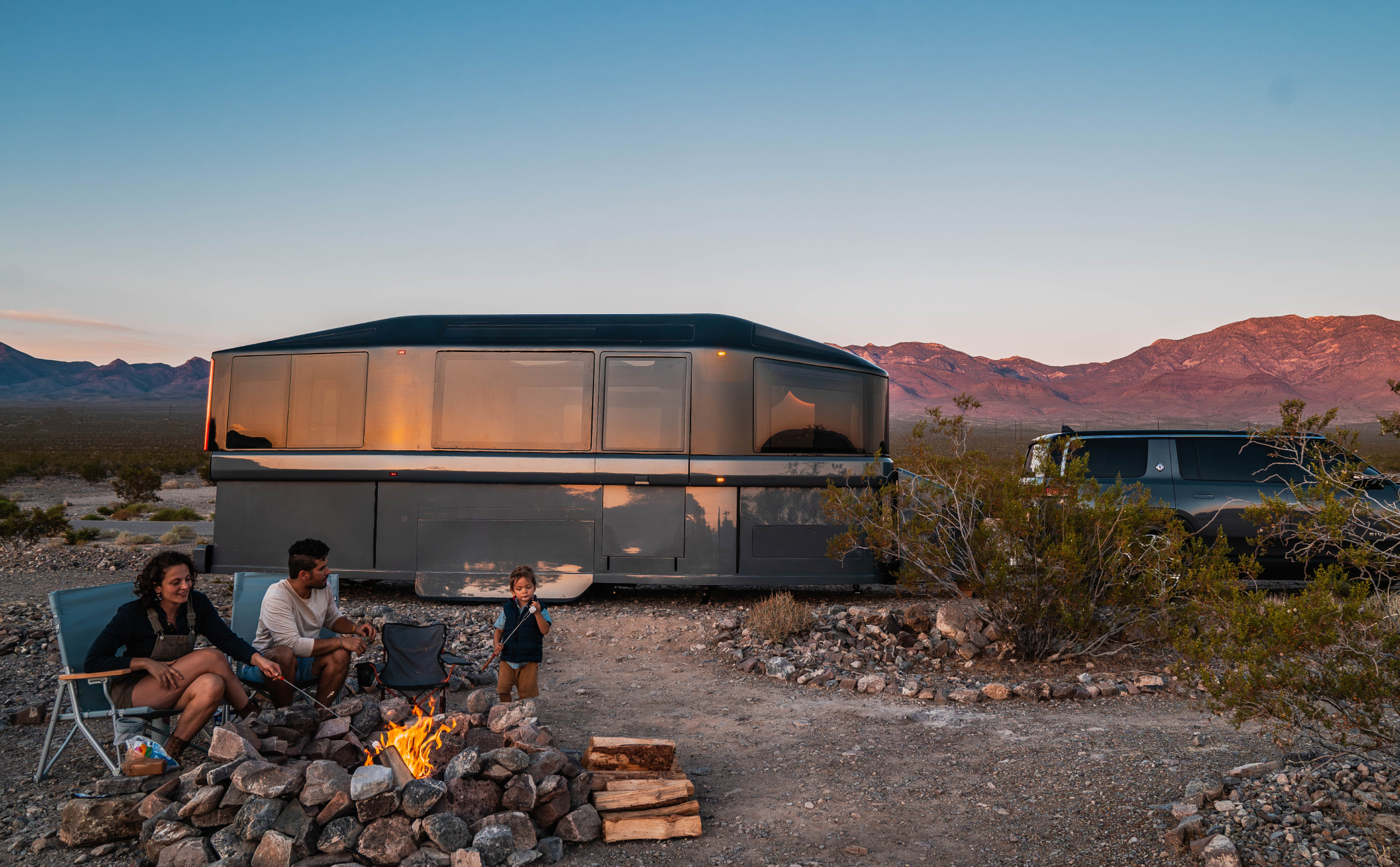From an overlanding point of view, the Lightship L1 is, in its current form, limited in terms of practical travel unless utilized as a base camp (of the Lightship models available, only the L1 Long Range is self-propelled). However, the technology and design of this self-propelled trailer interest us most, as well as the possibility that such innovation will inform the design and manufacture of future overland and off-road biased trailers. Before we get into the details of the L1, bear in mind that the self-propelled EV travel trailer concept is not entirely new and is gaining steam, with more than a few companies adopting similar technology for their travel trailers. Thor Industries has recently teased the Airstream E-Stream trailer (with pricing speculated above $200,000), and there are also the Pebble Flow, Aptera, and Crawler E-Trail self-propelled EV concepts in the works. Combined with ever-improving battery technology and an expanding charging network range, anxiety will eventually become a thing of the past for trailer-towing travelers.

As a base camp, the Lightship L1 has a lot to offer. Its efficient, futuristic design stands out, and the L1 team claims that the Lightship is three times more aerodynamic than traditional travel trailers. This design ethos stems from the company’s roots in electric vehicle development, with team members hailing from notable companies like Tesla, Rivian, Proterra, Lucid, and Zoox. The design of the L1 prioritizes efficiency, ensuring that an electric vehicle towing retains its range and a gas truck maintains its fuel efficiency. This is achieved through a proprietary power system that combines an automotive electric vehicle battery and powertrain with a residential-scale solar system.

Aerodynamic efficiency is achieved through a range of innovative design choices. The L1’s exterior design focuses on aerodynamics, with a storage box at the front integrated into the overall design to stabilize airflow and a boat-tailed rear to reduce drag. The design choices mentioned were not made in isolation but were the result of collaboration with a highly skilled aerodynamicist. The expert, Angus Lock, utilized advanced modeling software and an automotive development approach to inform these choices. The project began with an analysis of the airflow behavior around competitor trailers and some initial designs. Following this, a proportion study was undertaken. This involved identifying key design parameters and optimizing them through a Design of Experiments (DOE) approach. This method was instrumental in guiding the team towards the final design concept. The L1 Long Range model includes its own motor and battery, allowing it to propel itself, which further reduces the load on the tow vehicle.


The vehicle’s Dual Mode telescoping design reduces height while traveling (Road Mode), transforming into a spacious interior with a residential height ceiling when stationary (Camp Mode). This innovation significantly reduces the trailer’s drag, contributing to its aerodynamic efficiency.
The L1 promises an immersive outdoor experience with features like a solar roof, sleeping capacity for four to six people depending on the configuration, all-electric appliances, including a dishwasher, and connected features for a seamless camping experience. Its interior design maximizes space and comfort, with large windows offering panoramic views, flexible lounge space, and smart appliances. With the L1 parked behind a Tesla CyberTruck, the aliens might mistake you for one of their own!

For power, the L1 leverages solar energy and the self-propelled drivetrain, enabling off-grid living for up to a claimed seven days without recharging. Its solar roof and awnings are cleanly integrated, providing up to 3 kilowatts of solar power. The L1 can also charge your EV at the campsite or as a home backup generator.
Production of the L1 is expected to begin in late 2024. The L1 Long Range model, an all-electric camper equipped with a drive motor, is priced starting at $151,500. However, after accounting for the tax credit, the cost was reduced to $139,600.
Read More: Soft-shell Rooftop Tent Buyers Guide
Our No Compromise Clause: We do not accept advertorial content or allow advertising to influence our coverage, and our contributors are guaranteed editorial independence. Overland International may earn a small commission from affiliate links included in this article. We appreciate your support.


